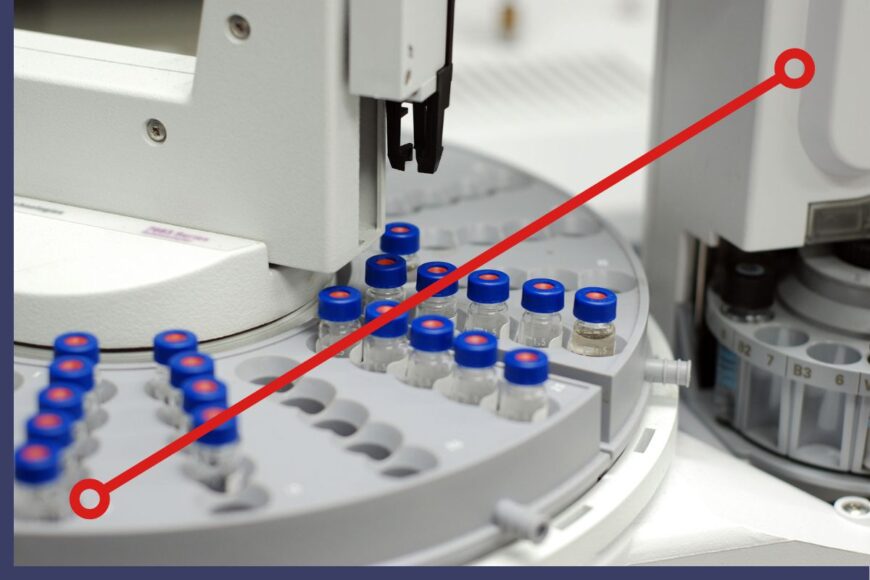
Calibration curves are essential for ensuring accurate and reliable results in gas chromatography (GC) analyses. By plotting known concentrations of an analyte against the detector’s response, you can establish a relationship between concentration and response. This allows for the quantification of unknown samples. This blog will guide you through the process of constructing a calibration curve for your GC machine, ensuring that you achieve precise results every time.
1. Preparation for Calibration
Before diving into the actual calibration, it’s crucial to prepare both the equipment and standards properly.
Identify the Analyte and Method
Start by identifying the analyte of interest. This could be a specific gas or volatile organic compound depending on your environmental monitoring or research needs. Ensure that your chosen analytical method is sensitive and selective for this compound. For example, if you’re measuring methane, select a method that distinguishes methane from similar compounds.
Determine the Concentration Range
The next step is to determine the concentration range that covers your expected sample concentrations. For reliable results, you’ll need at least 5 calibration standards spanning this range. It’s common to choose concentrations both slightly above and below your expected sample range to ensure the curve can accurately interpolate unknowns.
Prepare Gas Standards
Using high-purity gas cylinders as your stock, you can create a broad range of calibration standards by precise dilution. These cylinders, containing a highly concentrated or pure form of your target gas, serve as the foundation for all subsequent dilutions. By utilizing advanced equipment, you can accurately dilute this one cylinder to generate the entire range of concentrations required for your calibration curve. This approach avoids the need to source multiple gas cylinders for each concentration point, simplifying logistics and improving consistency. Careful control during this dilution process is critical—any minor inaccuracies can lead to flawed calibration curves, ultimately affecting the reliability of your entire analysis.
2. Creating Calibration Standards
With the appropriate gas cylinders ready, it’s time to create a series of calibration standards. These standards will have known concentrations of your analyte, which are crucial for constructing the calibration curve.
Dilution Techniques
Using your concentrated stock, dilute to prepare at least 5–7 standards that span the expected concentration range. Accurate pipetting and dilution techniques are essential to ensure that each standard has the correct concentration. You’ll want to maintain uniformity in the solvent used for both standards and samples to minimize any matrix effects that could distort results.
Label and Store
If filling canisters rather than using the gasses directly, properly label each calibration standard with its concentration, date, and fill pressure and store them appropriately. Some analytes can degrade over time, affecting the accuracy of your calibration curve. Always follow proper storage conditions based on your analyte’s stability.
3. Running Calibration Standards on the GC
It’s time to run them through the gas chromatograph, either through direct connection to a dilution system or prepared individual standard cylinders.
Consistent GC Parameters
Run each standard under the same GC conditions that you will use for your actual samples. This means keeping injection volume, split ratio, column temperature, and detector settings consistent across all standards and future sample runs. Inconsistencies in these parameters can lead to unreliable calibration data.
Reproducibility
To ensure reliability, run each calibration standard multiple times. Consistent results across repeated runs confirm that your GC machine is operating correctly and that your standards are prepared accurately. If the results are inconsistent, it may indicate an issue with your GC system or with the standard preparation, both of which will need troubleshooting.
4. Constructing the Calibration Curve
Once the GC machine has generated data for each standard, you can begin constructing the calibration curve.
Plotting the Data
The calibration curve is constructed by plotting the GC detector response (typically peak area or height) on the y-axis against the known analyte concentrations on the x-axis. The goal is to establish a linear relationship between concentration and detector response.
Linear Regression
Once the data is plotted, apply linear regression to fit a line to your data points. The regression equation will generally be in the form y = mx + b, where:
Assessing Linearity
The correlation coefficient (R²) measures how well the line fits the data points. An R² value close to 1 indicates a good fit, meaning the detector response is proportional to the analyte concentration. If your R² value is significantly lower than 1, reassess your standards and GC parameters for inconsistencies.
Closing Thoughts
A well-constructed calibration curve is the foundation of accurate and reliable gas chromatography analysis. By following these steps—preparing precise calibration standards, ensuring consistency in your GC parameters, and regularly maintaining your equipment—you can achieve the high level of accuracy required for complex environmental testing. At Environics, we understand the importance of precision in GC-based applications, from atmospheric monitoring to industrial gas analysis. If you’re looking to enhance your analytical capabilities or streamline your calibration processes, explore our range of solutions designed to support your GC workflows. Accurate results start with the right tools and expertise—partner with Environics to elevate your gas chromatography applications.

